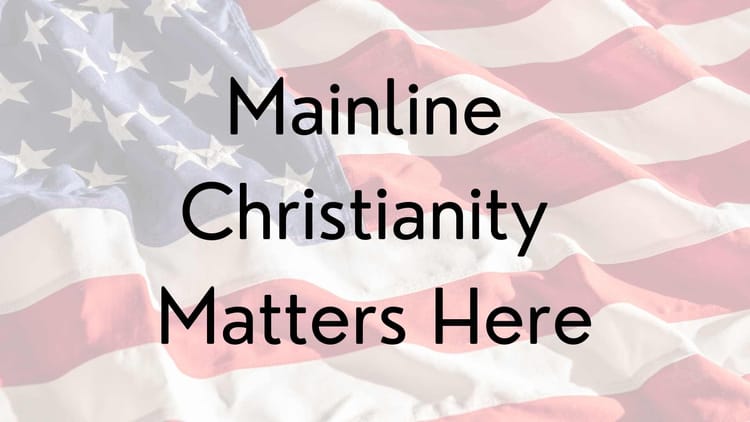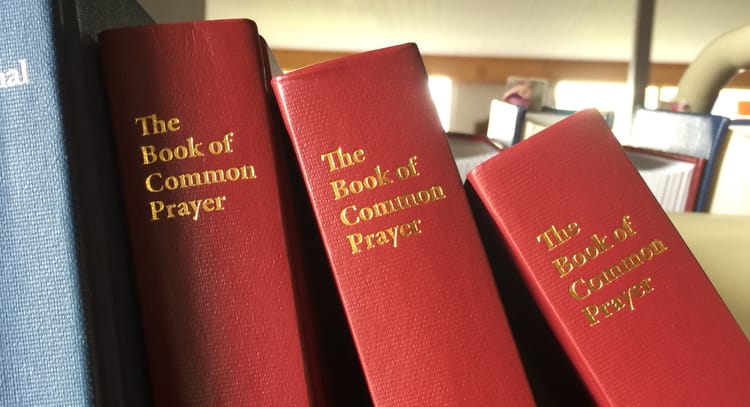On the Budget: A Voice Crying in the Wilderness. (Updated 6.3.12)

All people are grass, their constancy is like the flower of the field. The grass withers, the flower fades, when the breath of the Lord blows upon it; surely the people are grass.
The grass withers, the flower fades; but the word of our God will stand forever.
Isaiah 40:6-8
I’m not good at predicting the future. I did not foresee the development of the iPad, the rise of the global economy, or the collapse of the financial markets. But there is one fact about the future I do know: at a certain point, I will no longer be on earth to experience it. Despite the fact that the same is true of every member of the Episcopal Church, lately it seems we are not planning with this reality in mind.
I’ve just completed my study of the proposed 2013-2015 Triennial Budget for the Domestic and Foreign Missionary Society of the Protestant Episcopal Church in the United States of America (DFMS for short). The purpose of this post is not to describe the proposed cuts nor to lament them. (Others have already done this: the Crusty Old Dean, the Curate, and and many Christian formation leaders.) The purpose of this post is to make a few salient points that I haven’t seen expressed elsewhere, and give some reflections on them.
Point #1. The entire context for this budgeting process is a funding system under which revenue is uncertain. No diocese is mandated to give any money to The Episcopal Church. Although the budget is based on a requested percentage, member dioceses vary widely in the percentage they actually give. However, every diocese has equal access to the resources that are created from their shared resources. There are no consequences for giving less than the full asking. Is this equitable? No, this revenue model is designed from a mistaken notion of Christian charity that avoids accountability. But that’s the structure we’ve got, so that’s the model we have.
Point #2. I see no evidence that this budget is in relationship to the most recent Strategic Plan. In addition, the Strategic Planning Committee’s mandate from General Convention appears to be in no way connected to a future vision for the Episcopal Church. Is there any group of individuals actually authorized to develop such a vision? I am not sure. (Comments are open!) But I do know the answers to these questions: Is it possible to plan a trip when you don’t know where you’re going? No, it isn’t. Is it possible to budget for a trip when you don’t know where you’re going? No, again.
* * *
Lately, leading Episcopalians have been discussing the need to restructure the church. As points #1 – 3 above make clear, restructure is needed. This proposed budget boldly goes in the direction of creating restructure. This is wonderful. Previous commenters on the budget, in my opinion, have not done enough to express appreciation to the Executive Council for being willing to radically rethink the way we do business. Let me say “thank you” right now. The rest of this post points out what I consider to be two really big problems, but please hear this: I thank you for the risk-taking you did with this budget.
Unfortunately, in the risk-taking process, two areas where church-wide coordination is necessary to accomplish the sustained glorification of God are utterly overlooked:
- the development of the next generation of clergy
- the development of the next generation of laity
For both, this proposed budget effectively enacts a restructuring process without a comprehensive plan, a funded transition, or defined outcomes. The accompanying notes refer the work to the diocesan level.
Here’s the first problem: diocesan-level employees without national leadership can’t put on a church-wide youth conference, a conference for campus ministries, or facilitate international networking among formation ministries. Nor can any purely voluntary network of dioceses create a national standard for ordained clergy or create national gatherings of those experimenting with Fresh Expressions of church designed appropriately for the digitally-inclusive culture of Generation X, Y, and Millennials. Such work appropriately belongs to DFMS, which is why our polity is such that DFMS exists.
There’s another problem: For the sake of argument, disregard the first problem. Assume that in the age of the Internet, diocesan-level entities can effectively recreate church-wide events that change lives. In that case, a wise course of action would be to make doing so in mission-critical areas a planned step-up over a period of years, not a complete change to be enacted six months after General Convention. And don’t tell me we don’t have the money. It’s there, we just don’t have the courage to use it. (If I’m wrong, and we can’t touch our principal because of a canonical restriction, please tell me: comments are open.)
* * *
When I first viewed the presentation that the Executive Council received in January, I took it as a matter of course that the leaders of our church would see the development of the next generations as our most urgent strategic priority. That presentation made evident the need for multiple small experiments designed to foster the engagement of youth and young adults, a few of which would prove effective and replicable. Such experiments would appropriately be funded by DFMS; that’s the level of the church that can “afford” to run a large-scale experiment with a high risk of “failure.”
Instead, if this budget is enacted, the entire development of the next generation of the body of Christ, including the planting of churches that match the culture of rising generations, would be unilaterally delegated to not-yet-existent voluntary networks of dioceses and parishes through a hasty and unfunded restructuring process.
Fortunately, the church is founded and sustained by a living God. And fortunately, this is still a proposed budget. You are welcome to make your comments to the Program, Budget, and Finance Committee here. No–let me make that stronger: PLEASE make comments to the Program, Budget and Finance Committee HERE and NOW.
This is a draft budget which can still change before General Convention. I pray for the Program, Budget, and Finance Committee members (all 36 of them!) as they discern between the competing alternatives and seek the wisest course. My prayer for them and for us all includes these words: “Glory to God whose power, working in us, can do infinitely more than we can ask or imagine: Glory to him from generation to generation in the church, and in Christ Jesus forever and ever.”





Member discussion